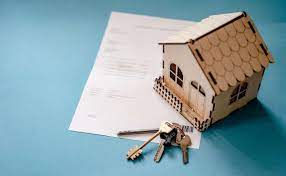When Which Area Is Not Protected By Most Homeowners Insurance? you think of homeowners insurance, you likely think of coverage for your home and everything inside it. But what about the things outside your home? In this blog post, we will explore which areas are not typically covered by most homeowners insurance policies. From sheds and garages to porches and steps, read on to learn about the some of the more common exclusions.
What is Homeowners Insurance?
Homeowners insurance protects your home and possessions from damage or loss caused by accidents or natural disasters. Coverage typically includes property damage, loss of use, and personal injury protection. Homeowners insurance is compulsory in most states, so it’s important to know which areas are not covered by most policies. Here are five common exceptions:
1. Your home is not covered if it’s unoccupied for more than 60 days during a policy year.
2. Your home is not covered if it’s used for business purposes.
3. Your home is not covered if you’re a renter rather than a homeowner.
4. Your home is not covered if the value of your home is less than $250,000 (in some cases this limit may be higher).
5.Your home is not automatically included in your policy regardless of whether you live in it or not – you’ll have to add it yourself as an additional coverages option.
Types of Coverage
Are you thinking about purchasing homeowners insurance but aren’t sure which area is not protected by your policy? Here are the five most common areas where homeowners insurance does not cover damage:
1. Your Home’s Exterior Walls and Windows: Most homeowners policies only cover damage to your home’s interior walls and windows. If someone breaks into your home and damages these structures, you may not be covered.
2. Your Home’s Roof: Many homeowners policies do not cover damage to your roof, whether it is caused by wind, hail, or other natural phenomena. If there is a major storm and your roof shatters, you may be out of luck.
3. Your Home’s Chimney: While most homeowners policies do cover damage to your home’s exterior chimney, they may not cover any damage done to the brickwork or mortar around the pipe inside the chimney. If a storm causes this damage, you may have to pay for repairs yourself.
4. Your Home’s Gas Piping and Fuses: Just like with your home’s chimney, many homeowners policies do not protect gas piping and fuses from storm damage. If a lightning strike causes a gas leak or an electrical fire starts in your home due to weather conditions, you could be left owing a hefty bill for repairs.
Location Matters
Most homeowners insurance policies do not cover properties located in flood plains, levees or other areas that have a higher risk of flooding. Flood plains are typically defined as low-lying areas along rivers, creeks and other bodies of water that are regularly flooded by rainfall or fast-flowing water. Many homes in these areas are built near the edge of a river or creek, which can increase the chance of flooding. Homes located in other high-risk areas may also be at risk if there is an earthquake or another natural disaster.
Which Areas Are Not Protected by Most Homeowners Insurance?
Generally speaking, most homeowners insurance policies do not cover areas such as basements, crawl spaces, and garages. This is because these areas are considered part of the home itself, and therefore are not typically covered by standard homeowner insurance policies.
Conclusion
Homeowners insurance does not typically cover areas such as the garage, attic, and crawlspace. If you are in any of these locations and something happens, it is important to speak with a qualified home insurance advisor so that you can find the right policy for you and your family.



